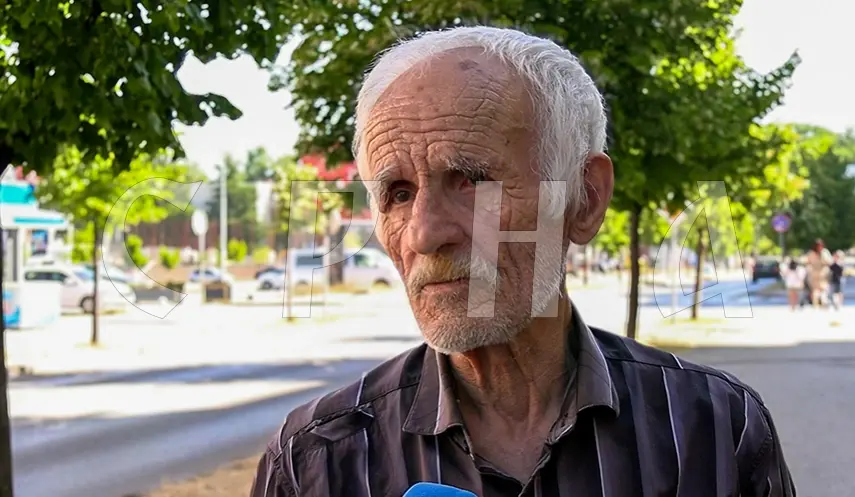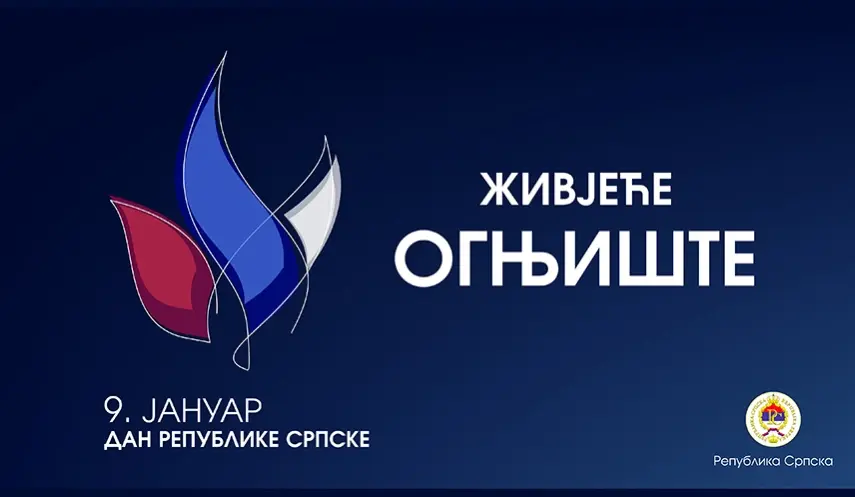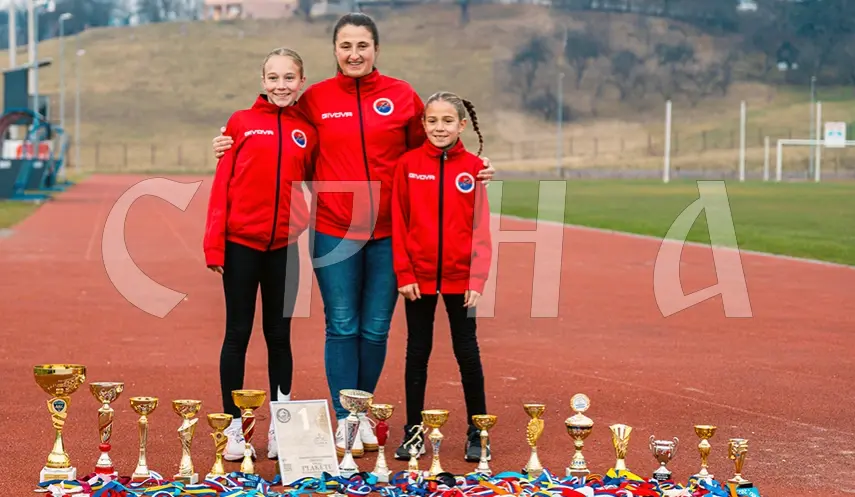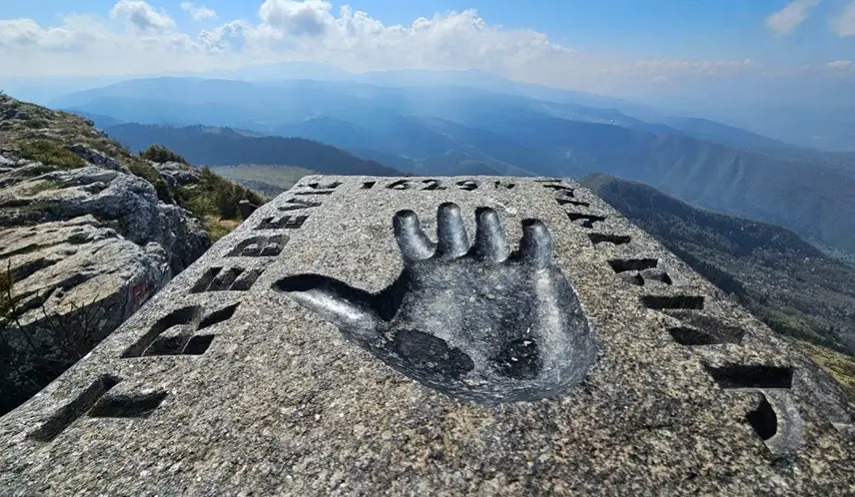ZUROVAC: NEVESINJE RIFLE IS CONTINUATION OF KARAĐORĐE’S UPRISING
Republika Srpska - Nevesinje Uprising
07/04/2025
11:19

How many Serbian monuments were destroyed in Pavelić's so-called state, up until the end of the 20th century? To mention just a few: the Žitomislić Monastery, the Cathedral Church and the Bishop's Palace in Mostar, the Monastery of Duke Stefan in Sopotnica, which not even the Turks touched, but was destroyed by Alija Izetbegović's mujahideen. For centuries, conquerors in these lands spread hatred and Serbian graves, Zurovac says.
Prepared by: Ognjen BEGOVIĆ
EAST SARAJEVO, JULY 4 /SRNA/ – The Nevesinje Rifle, the 150th anniversary of which is marked this year, is a continuation of Karađorđe's Uprising from 1804, but also the first spark that flared where East and West, Islam and Christianity, and two empires met, writer Dušan Zurovac told SRNA.
Zurovac, who describes himself as an orthodox Nevesinje native, emphasized that Serbs have never conquered other people’s lands, but rather fought for their bare lives and freedom on their own land, yet these new conquerors still labeled them as aggressors.
"What cynicism. It turns out that even in 1992, during this war, we were attacking and conquering ourselves," stressed Zurovac, who is the president of the Truth Association from East Sarajevo.
Zurovac notes that throughout history, nothing Serbian was sacred to the occupiers, who only spread hatred and Serbian graves for centuries.
"It wasn't only the Turks who did that – the Austrians did it, the fascists did it, and finally, the Bosnian converts did it too. It wasn't only in Kosovo and Metohija that churches and monasteries were destroyed. How many Serbian monuments were destroyed in Pavelić's so-called state, and even up until the end of the 20th century, when Serbian churches and monasteries were desecrated or completely destroyed? To mention just a few: the Žitomislić Monastery, the Cathedral Church and Bishop’s Palace in Mostar, the Monastery of Duke Stefan in Sopotnica, which not even the Turks touched, but was destroyed by Alija Izetbegović's mujahideen. And so on, and so forth – and how long will it go on? For centuries, conquerors in these lands have spread hatred and Serbian graves," Zurovac stated.
Zurovac claims that the Nevesinje Rifle is a continuation of Karađorđe’s Uprising from 1804, but also the first spark of freedom.
"If Karađorđe hammered the first nail into the coffin of the Ottoman Empire back then, the last nail was hammered by the Herzegovinian Uprising of 1875–1878," Zurovac told SRNA, ahead of the central commemoration of the 150th anniversary of the Nevesinje Rifle, planned for Sunday, July 6, in Nevesinje.
At that time, he notes, someone had to "speak up," and that task fell upon the Herzegovinian Serbs.
He said that it was necessary to confirm with rifles the determination of Herzegovinian Serbs to rise up, just as every long journey begins with the first step, so too do all wars begin with the first bullet, which in this case was fired by the hajduk leader Pero Tunguz from Nevesinje.
Zurovac noted that in the mid-19th century, all of Europe saw a sudden and massive awakening of national consciousness, especially among small and subjugated peoples, not only within the Ottoman Empire but much wider, as the blind finally saw, as they would say in Nevesinje.
"There was much talk and writing in our and European historiography about this awakening of national consciousness, which would bring the Ottoman Empire to its knees. It has been recorded that the streets of Vienna, Pest, Buda, Berlin, and many other European cities were burning because the people took to the streets with their demands for freedom. The little man stood up, seeking rights that belonged to him by God's and human laws. Uprisings flared throughout the Ottoman Empire," said Zurovac, who is also the author of the novel "The Nevesinje Rifle".
FREEDOM OF THE SERBIAN PEOPLE HAS BEEN PAID FOR DEARLY THROUGH HISTORY
He points out that rulers brutally crushed these uprisings, and the price was truly high, recalling Turkish mass crimes in Bulgaria, where Circassian subjects committed atrocities counted among the worst, with some historians equating them with the Turkish massacre of 1.5 million Armenians.
"And so, Eastern Herzegovina also flared up, with the uprising of Duke Luka Vukalović in 1852 in southern Herzegovina, in which several future leaders of the Nevesinje Rifle distinguished themselves, such as Mihajlo Mićo Ljubibratić, Bogdan Zimonjić, Stojan Kovačević, and Aleksa Jakšić. They would, some twenty years later, play a very important and indispensable role in the 1875 Herzegovinian Uprising – Ljubibratić and Jakšić as awakeners of national consciousness, Kovačević as a notable hero. Indeed – down with might and injustice! These were men of such calibre that Prince Nikola of Montenegro would say that their example would serve as an example for an example `of how to speak with immortality,`" Zurovac writes in his novel "The Nevesinje Rifle".
Zurovac states that Ljubibratić was from Trebinje, Kovačević and Zimonjić were from Gacko, and Jakšić from Nevesinje, and that their names entered history through the grand gates, but sadly, they did not achieve the freedom for which they fought so devotedly.
He says that the Herzegovinian Uprising produced many major historical figures and great heroes, making it hard to list them all.
This uprising also produced priest Petar Radović from Nevesinje, Duke and priest Bogdan Zimonjić from Gacko, Duke Lazar Sočica from Piva, as well as Vulo Adžić, Maksim Baćević, Mrdak Luburić, haiduks Pero Tunguz and Stojan Kovačević, Stojan's uncle Petko Kovačević, whom the Turks publicly hanged in Mostar’s Tepa, and many others upon whom stand firm and tall historical pillars.
LJUBIBRATIĆ – HERO AND TRAGIC FIGURE
Zurovac points out that among them, the most tragic figure is Mićo Ljubibratić – as a personality within the Herzegovinian Uprising, as a bearer of modern ideas that could not take root in such a harsh time on Herzegovinian soil, as commander of the International Battalion, and as an intellectual whom the Montenegrin prince suspected.
"In the end, Ljubibratić was tragic as an Austrian prisoner and as a man who had to defend himself from many attacks," Zurovac noted.
According to him, Ljubibratić, much earlier, upon returning from Russia, drafted a complete plan for the uprising, which the Nevesinje leaders fully adopted at the Žitomislić Monastery in 1874.
It is known, Zurovac recalls, that Ljubibratić's role in Vukalović's uprising and his heroism were disputed. He notes that Ljubibratić was an intellectual who spoke French, Russian, and Italian, a supporter of Mazzini's concept of uniting peoples, and a friend of the Italian revolutionary Garibaldi. Ljubibratić, Zurovac notes, was a participant in Vukalović's uprising, a national activist in Milan's Serbia, "an honest and worthy patriot, pious, enterprising, and wise, Vukalović's right hand in all matters involving writing, but also ready to wield the sabre when needed."
"When we speak today of those giant heroes, it is hard to single out the first among the first, the best among the best – perhaps it would be unjust to those whose names are less resonant. Should I mention young Maksim Baćević, Captain Vulo Adžić, who was treacherously killed by the Turks, Jovica Zirojević, Petko and Stojan Kovačević, Pero Tunguz, Bogdan Zimonjić, Mrdak Luburić, Kiko Stevanović, Milutin Žerajić, Mićo Ljubibratić, Aleksa Jakšić, Savo Zurovac – one does not know who among them was greater than the greatest, all of them secured a place in Serbian history, and especially in the people’s memory. Each of them deserves an entire book. Does Petko Kovačević, whom the Montenegrin prince handed over to the Turks, not deserve a book? Does his conduct on the gallows not deserve a book!? Petko was also betrayed," Zurovac states in his unpublished novel "The Nevesinje Rifle".
Zurovac observes that in liberating itself from Turkish occupation, Herzegovina largely fell under Austrian influence, with an unnatural border drawn at the 1878 Berlin Congress across the unified organism of old Saint Sava's Herzegovina.
In his opinion, the plan to merge Herzegovina with Montenegro fit into the broader centuries-long plan to liberate all Serbdom, and Prince Nikola used this idea to win over and unite all Serbian tribes outside Montenegro.
CONTROVERSIAL ROLE OF MONTENEGRIN PRINCE NIKOLA
However, what can be reproached to the Montenegrin court, Zurovac emphasizes, is its irresistible need to diminish the role of Herzegovinians in favor of the prince and his entourage. Prince Nikola brutally prevented Herzegovinians from connecting with Serbia so that they would not turn to it, and every such attempt was harshly punished.
According to historical data, the Herzegovinian Uprising began on June 27 / July 9, 1875, in the Nevesinje region and represents one of the most fateful events in the history of Southeast Europe in the 19th century.
Among the insurgents was Countess Johanna Merkus, a volunteer from the Netherlands. This noblewoman and warrior loved the Serbs deeply.
She joined the Herzegovinian insurgents via Dubrovnik in Ljubibratić's headquarters. She proved herself in battle and as a nurse. The Serbs called her Jovana, while some chroniclers called her the Serbian Joan of Arc.






